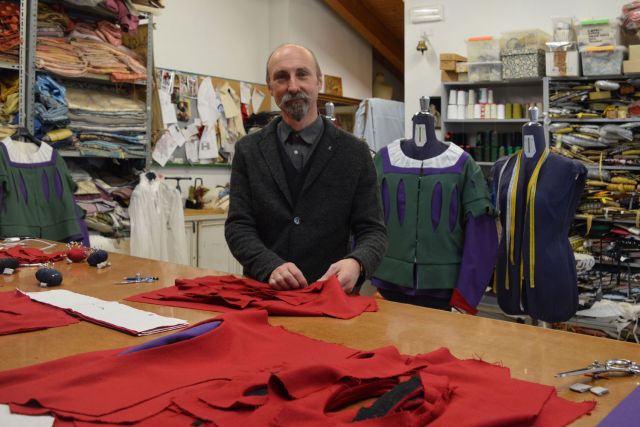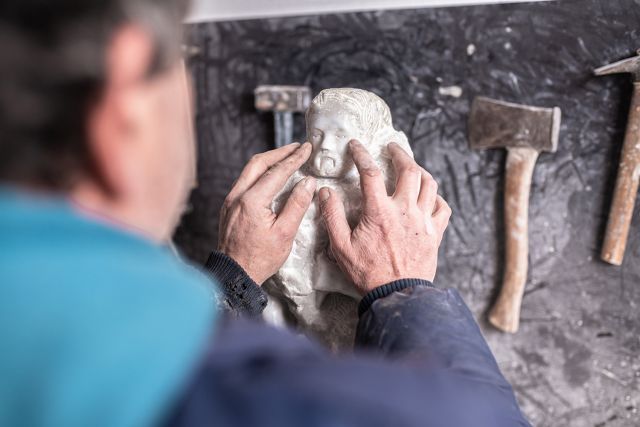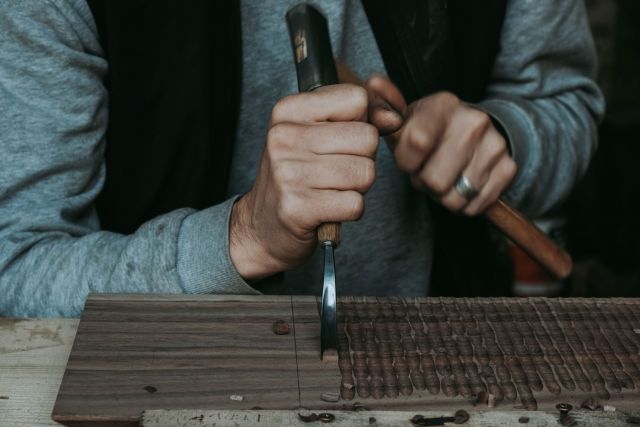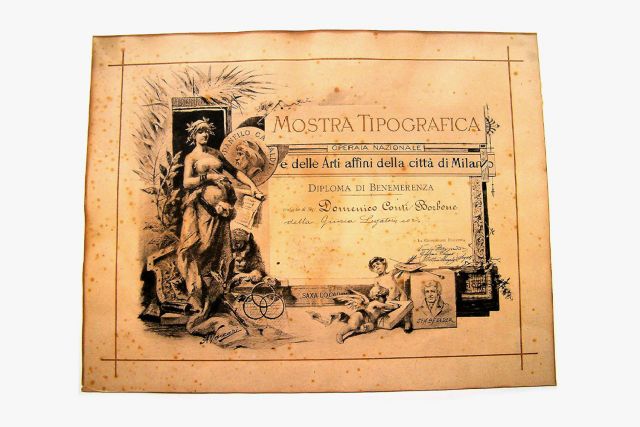This dress was created for the proclamation of the “Carnival’s Mary” in 2013. It is made in damask and silk with ancient trimmings based on the model of a dress used at the French court in the mid 1600s.

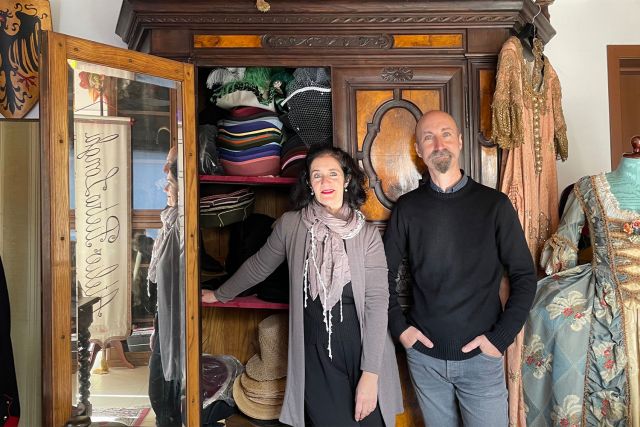
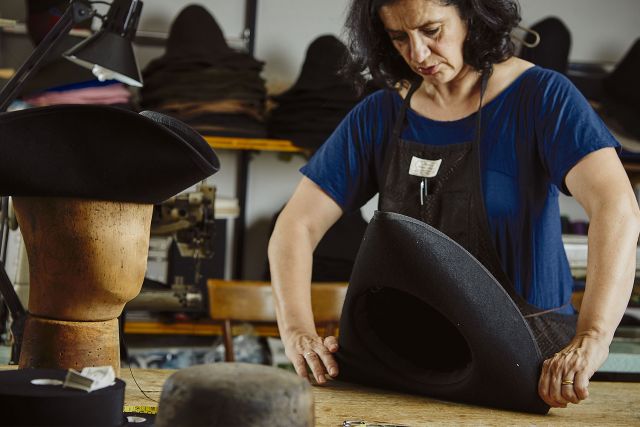
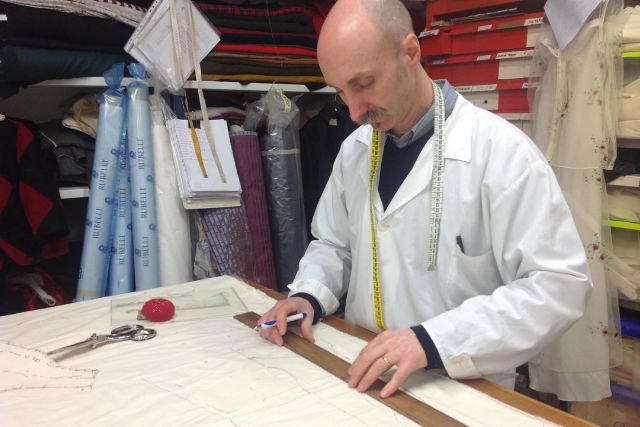
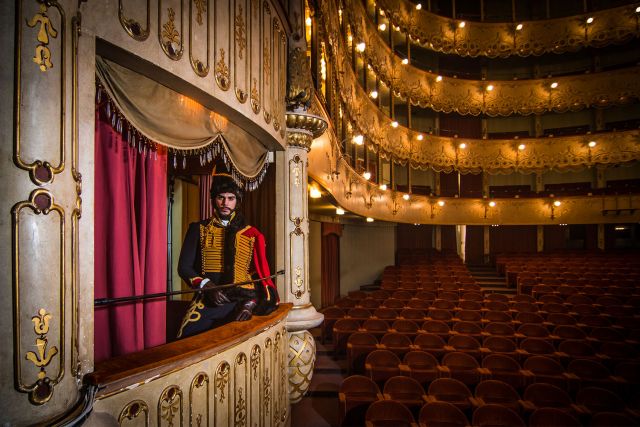
Francesco Briggi and Anna Zappella
- Atelier Pietro Longhi
- Tailor
- Cappelletta di Noale, Italy
- Master Artisan
By appointment only
+39 3289706572
Dress-up made fancy
- • Francesco and Anna are partners in work and in life
- • They create costumes for historical events, cultural productions and for the Venice Carnival
- • The painter Pietro Longhi provides inspiration for their work
Francesco Briggi and Anna Zappella are the masterminds behind Atelier Pietro Longhi, which has roots in its founder’s love for dressing up. Francesco grew up on the mainland surrounding Venice. Tailoring runs in his family and his parents always encouraged his eccentric love for costumes, allowing him to play dress up whenever he preferred. Growing up, Francesco started ordering books online from England and Germany that described historical costumes and guided him through their reproduction. These books were not available in Italian as Italy had yet to start dissecting and studying old costumes. In 1988, Francesco met Anna Zappella, together they opened their first atelier, inside a small garage, 44 square metres. Today, in a villa in the outskirts of Venice and surrounded by vineyards, the duo create historical costumes for a worldwide clientele.
Read the full interviewWorks
Photo: © Simone Padovani

Photo: © Simone Padovani
This dress is inspired by Tiepolo’s painting “Neptune offers gifts to Venice”. It is made in viscose-damask with yellow and brick-red cotton woven using the matelassé technique. The crown is made out of trimmings, gold tinsel and glass.

Photo: © Simone Padovani
This dress is part of a project featuring faithful reproductions of clothes worn by notable historical characters portrayed by more famous painters. The dress is made of wool, silk and black brocade.

Photo: © Simone Padovani
Reproduction of a dress from the second half of the 1800s. It is made of light blue iridescent silk with shades of turquoise and gold and with a particular structure that, despite the volume of the skirt, allows the dance movements typical of those times.

Photo: © Simone Padovani
Baroque dress in damask and silk satin with jewelled metal buttons. The tricorne is made out of felt and decorated with original marabout feathers in green.





